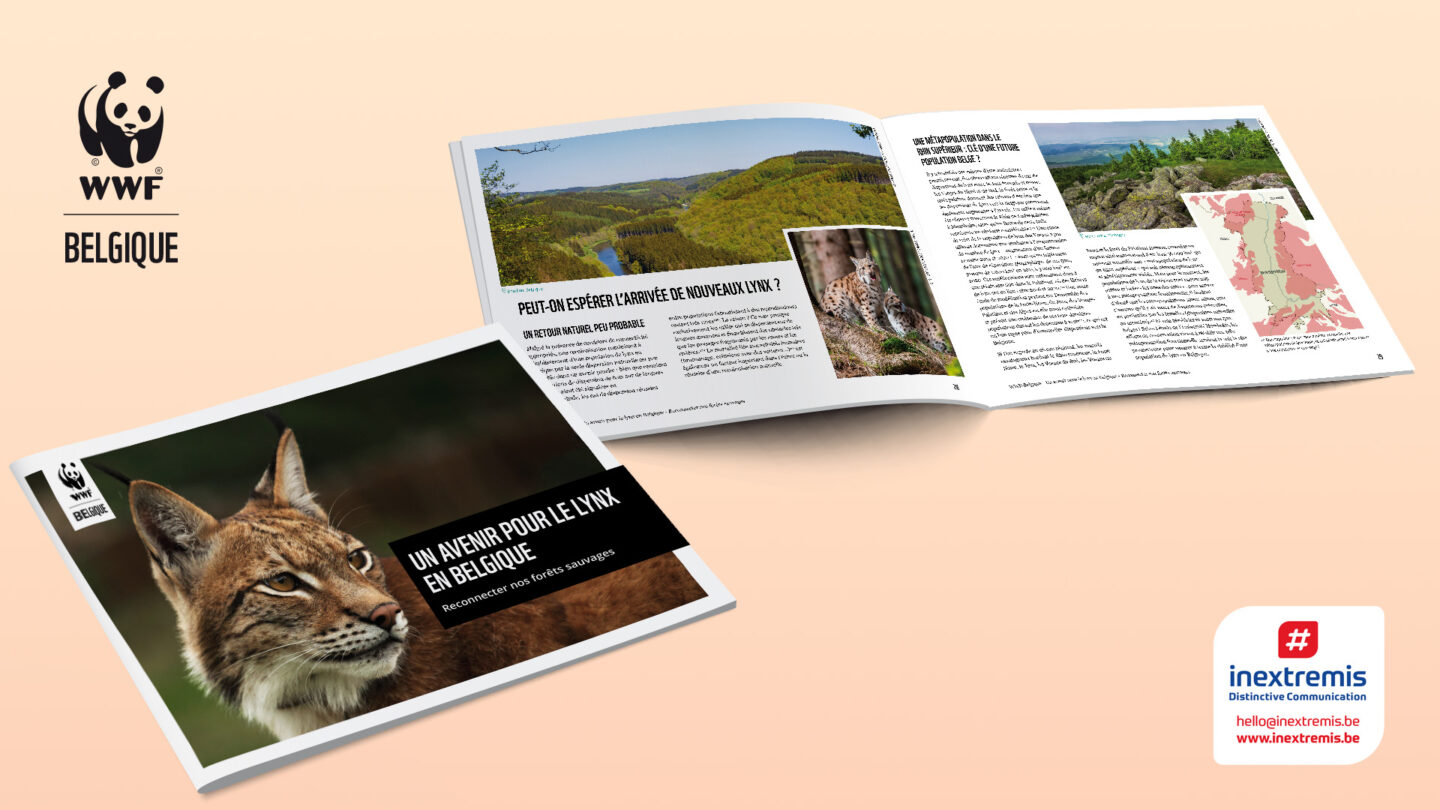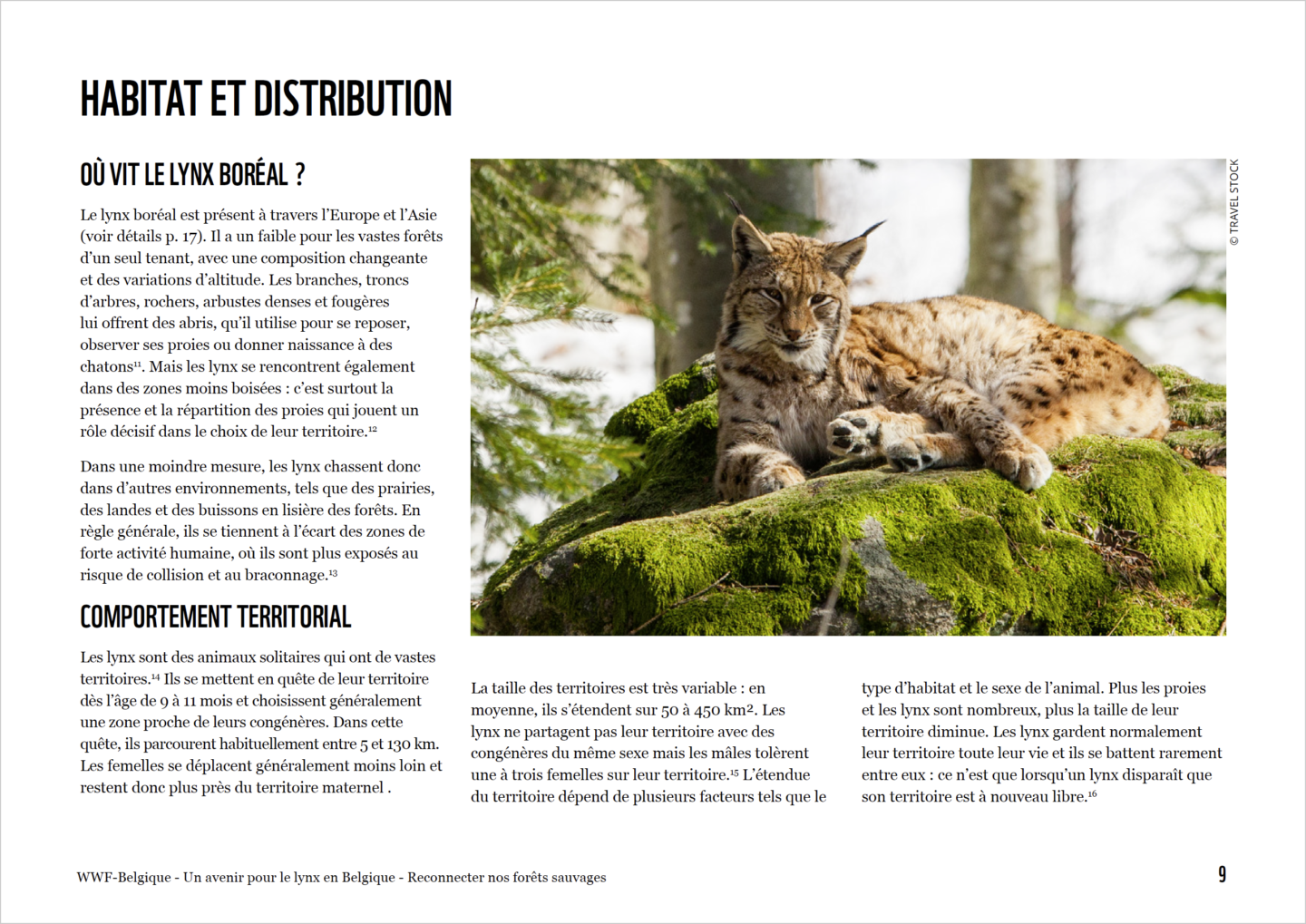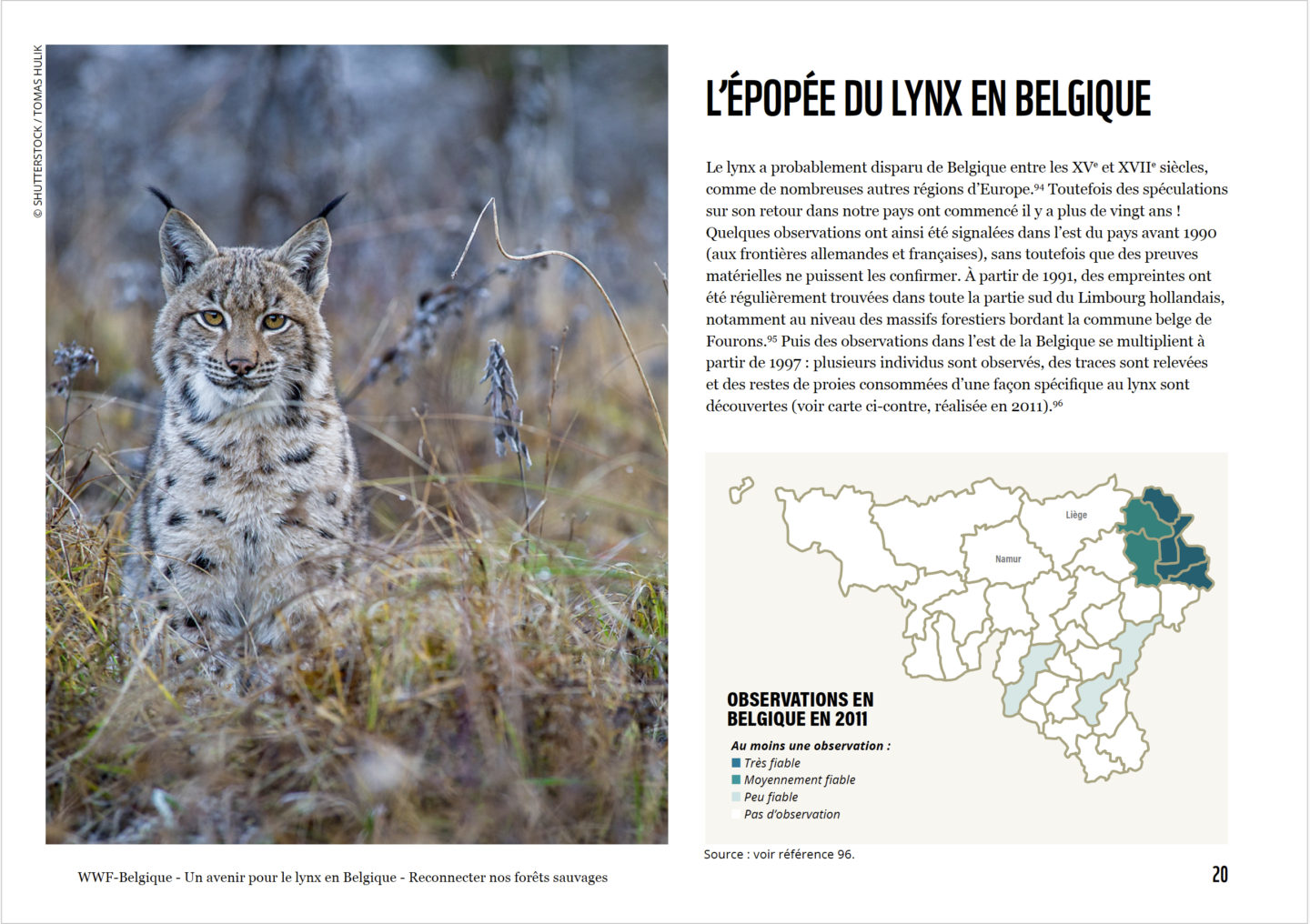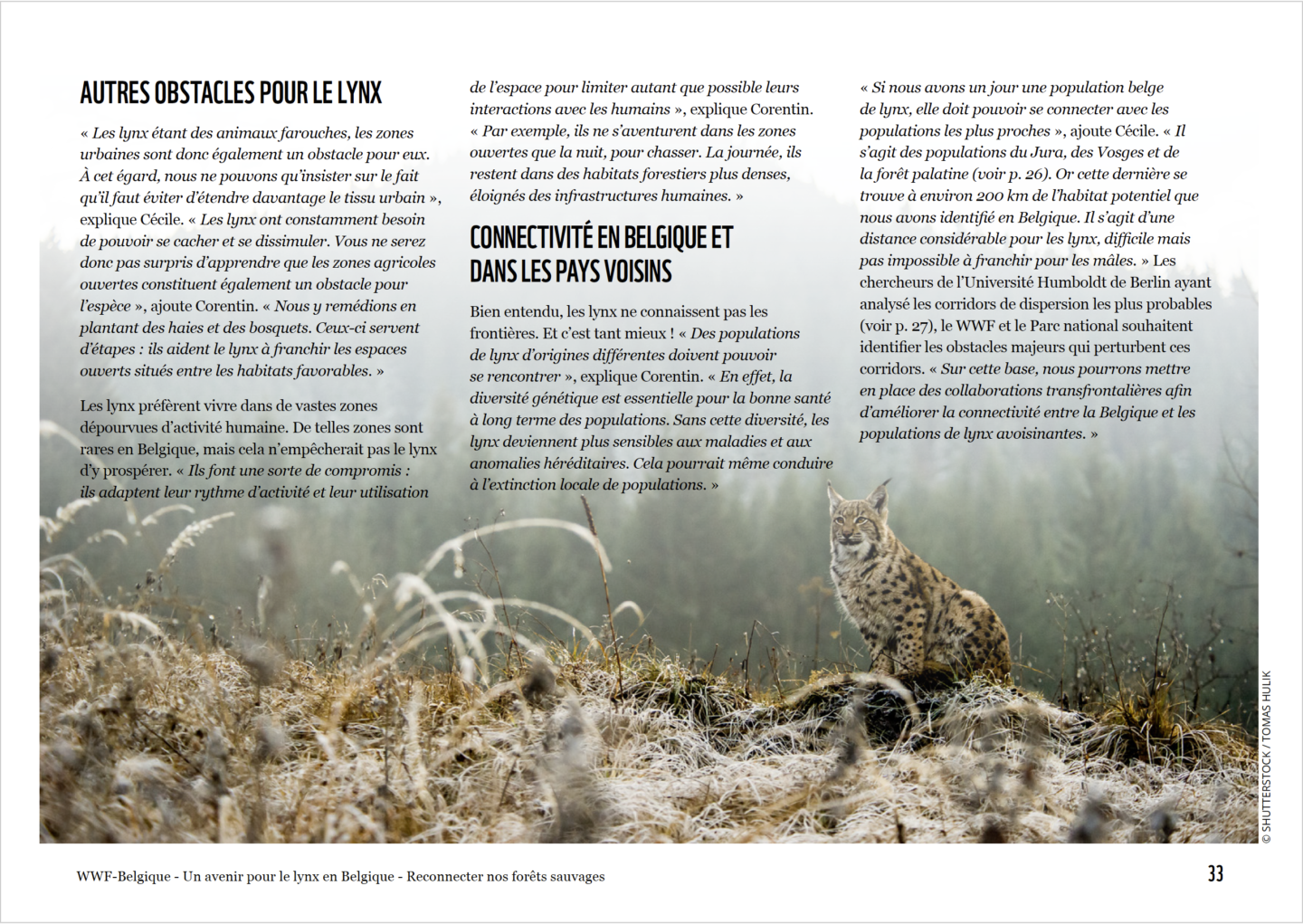WWF

Bringing the Lynx Back to Belgium’s Forests: Why It Matters to Everyone
Imagine the thrill of spotting a majestic lynx, with its tufted ears and powerful stride, roaming freely through the lush forests of Belgium. At #inextremis, we are excited to collaborate with WWF’s esteemed team—Esther Favre-Félix, Emma Maris, and Martin Collette—to make this vision a reality. Our latest project, the brochure “Un avenir pour le lynx en Belgique,” details the innovative strategies and groundbreaking efforts to reintroduce and safeguard the Eurasian lynx in Belgium.

This article delves into the brochure’s key insights, highlighting the importance of preserving this iconic predator and its natural habitat. The Eurasian lynx, Europe’s giant wild cat, plays a vital role in maintaining the health and balance of forest ecosystems. By preying on ungulates like roe deer, the lynx helps control these populations, allowing forest vegetation to regenerate and thrive.
Once widespread across Europe, the Eurasian lynx faced near extinction by the 20th century due to habitat destruction, hunting, and human encroachment. However, the late 20th century saw efforts to reintroduce and support lynx populations, leading to significant recovery progress across various European countries. With its rich biodiversity and numerous protected areas, Belgium offers a promising habitat for the lynx. The photographic evidence of a lynx presence in the Semois Valley in 2020 marked a significant milestone, galvanizing conservation efforts to establish a sustainable lynx population in Belgium.

Critical strategies for lynx conservation include habitat restoration and protection, improving connectivity, and cross-border collaboration. Restoring and protecting natural habitats involves creating and maintaining forest edges, preserving critical habitats, and designating integral forest reserves. These actions benefit not only the lynx but also enhance overall biodiversity. Enhancing ecological corridors to connect fragmented habitats is essential for allowing lynx and other wildlife to move freely and find mates, thereby supporting genetic diversity and population stability. Additionally, lynx populations do not adhere to national borders, making international cooperation vital. Collaborative efforts with neighboring countries like France and Germany are necessary to create a network of protected areas and corridors that facilitate lynx movement and genetic exchange.
Raising public awareness about the lynx and its ecological importance is crucial to WWF’s strategy. Educating local communities, involving them in conservation efforts, and promoting coexistence between humans and lynx are essential steps toward a sustainable future for these majestic animals.
The efforts to reintroduce and support the Eurasian lynx in Belgium are a testament to the power of collaborative conservation. By restoring habitats, improving connectivity, and fostering international cooperation, we can ensure that the lynx survives and thrives in our forests. This initiative underscores the broader goal of living in harmony with nature, a global mission at the heart of WWF’s work.

For more detailed information, you can access the full brochure: https://wwf.be/fr/publicatie/un-avenir-pour-le-lynx-en-belgique
At #inextremis, we are committed to supporting WWF in creating a future where the lynx can roam freely through Belgium’s forests again, symbolizing hope and resilience in our natural world.